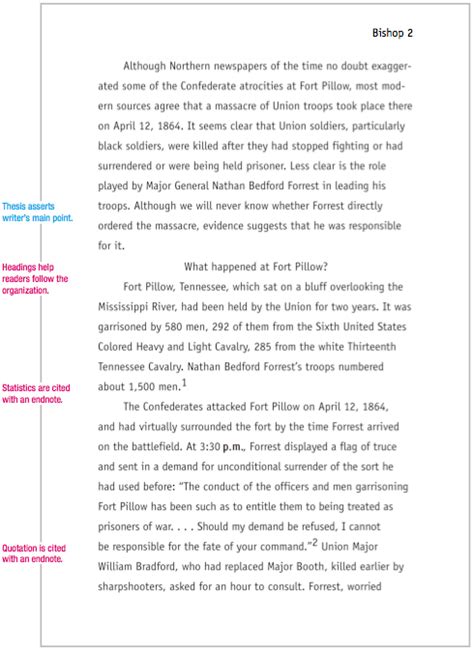Chicago Style Mla Format

In the realm of academic writing and research, the selection of an appropriate citation style is crucial, as it ensures the proper acknowledgment of sources and facilitates a standardized presentation of information. Among the various citation styles, the Chicago and MLA styles stand out as popular choices, each with its own unique characteristics and guidelines. This article aims to provide an in-depth exploration of both the Chicago and MLA citation styles, highlighting their key features, usage scenarios, and the specific formats they employ for citing various types of sources.
The Chicago Citation Style

The Chicago Manual of Style, now in its 17th edition, offers two distinct systems for referencing sources: the Notes and Bibliography system and the Author-Date system. The choice between these systems often depends on the discipline and the nature of the sources being cited.
Notes and Bibliography System
This system, often preferred in the humanities and arts, employs a combination of footnotes or endnotes and a bibliography. Footnotes or endnotes provide brief citations within the text, offering readers immediate access to source information. A comprehensive bibliography, usually placed at the end of the paper, lists all the sources cited or consulted.
An example of a footnote in the Chicago style for a book would be: John Smith, The Art of Painting (New York: Oxford University Press, 2020), 56.
| Type of Source | Format |
|---|---|
| Book | Author's Last Name, First Name. Title of Book. Place of Publication: Publisher, Year of Publication. |
| Journal Article | Author's Last Name, First Name. "Title of Article." Journal Name, Volume, Issue (Year): Page Numbers. |
| Website | Author's Last Name, First Name. "Title of Web Page." Website Name, URL, Access Date. |

Author-Date System
Commonly used in the sciences and social sciences, the Author-Date system employs parenthetical in-text citations and a reference list. In-text citations provide a brief reference to the source within the text, typically including the author’s last name and the year of publication. The reference list, placed at the end of the paper, provides full details of all the sources cited.
An example of an in-text citation in the Chicago style for a journal article would be: (Smith 2020, 12)
| Type of Source | Format |
|---|---|
| Book | Author's Last Name, First Initial. Title of Book. Year. Place of Publication: Publisher. |
| Journal Article | Author's Last Name, First Initial. "Title of Article." Journal Name, Volume, Issue (Year): Page Numbers. |
| Website | Author's Last Name, First Initial. "Title of Web Page." Website Name, URL (Access Date) |
The MLA Citation Style

The Modern Language Association (MLA) style, now in its 9th edition, is primarily used in the humanities, particularly in language and literature studies. It offers a streamlined approach to citing sources, focusing on simplicity and consistency.
MLA In-Text Citations
MLA style employs parenthetical in-text citations, which typically include the author’s last name and the page number(s) of the cited material. If the author’s name is mentioned in the text, only the page number(s) are included in the parentheses.
An example of an MLA in-text citation for a book would be: (Smith 56) or Smith argues that... (56)
| Type of Source | Format |
|---|---|
| Book | Author's Last Name, First Name. Title of Book. Place of Publication: Publisher, Year of Publication. |
| Journal Article | Author's Last Name, First Name. "Title of Article." Journal Name, Volume, Issue (Year): Page Numbers. |
| Website | Author's Last Name, First Name. "Title of Web Page." Website Name, URL, Access Date. |
MLA Works Cited List
The MLA style uses a Works Cited list, which is essentially an alphabetical list of all the sources cited in the paper. This list provides full details of each source, enabling readers to locate the sources easily.
An example of a book citation in the MLA Works Cited list would be:
Smith, John. The Art of Painting. New York: Oxford University Press, 2020.
Choosing the Right Citation Style
The decision to use either the Chicago or MLA style often depends on the discipline and the specific guidelines set by the institution or publication. While the Chicago style offers more flexibility with its two systems, the MLA style provides a straightforward and widely recognized approach for citing sources in the humanities.
Conclusion
Both the Chicago and MLA citation styles are valuable tools for academic writing, each with its own unique strengths and applications. By understanding the key features and formats of these styles, writers can ensure that their work is properly cited and presented, contributing to the integrity and credibility of their research.
What is the primary difference between the Chicago and MLA citation styles?
+The Chicago style offers two distinct systems for referencing sources: the Notes and Bibliography system and the Author-Date system. MLA style, on the other hand, employs a streamlined approach with in-text citations and a Works Cited list.
Which citation style is more commonly used in the humanities?
+The MLA style is predominantly used in the humanities, particularly in language and literature studies. It provides a simple and consistent approach to citing sources.
Are there any disciplines that favor one citation style over the other?
+Yes, the Chicago style’s Notes and Bibliography system is often preferred in the humanities and arts, while its Author-Date system is more commonly used in the sciences and social sciences. MLA style is generally favored in the humanities, especially for language and literature studies.


